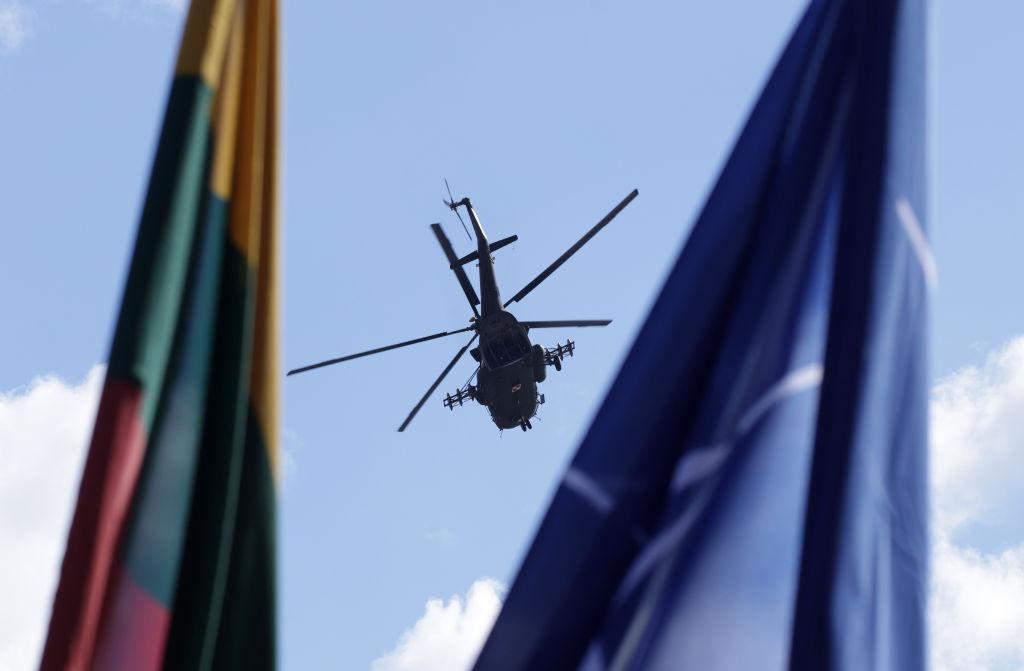
The NATO summit in Vilnius, Lithuania, promises to be anything but business as usual for the simple reason that it will be taking place against the backdrop of a European war that has been raging ever since Russia launched its full-scale invasion of Ukraine in February 2022. The agenda is long, difficult and critical.
Many participants and observers have been calling for NATO’s 31 members to invite Ukraine to join the alliance. That is unlikely to happen. Alliance membership requires unanimous consent, and several members, including the United States, are not ready to support an immediate move.
Those resisting bringing Ukraine into NATO now have it right. The North Atlantic Treaty’s all-important Article 5 extends a solemn commitment to collective defence: an attack on one member constitutes an attack on all. Ukraine is already under attack. Membership under these circumstances would turn a war between Russia and Ukraine into a war between Russia and NATO.
The result would be the wider war that the US has wisely sought to avoid. War between NATO and Russia would also increase the risk of escalation to nuclear use.
Moreover, it is unclear what NATO’s members would be signing up to defend if Ukraine were to be admitted. Would they be defending Ukraine’s 1991 borders? February 2022 Ukraine? Today’s Ukraine? Tomorrow’s? NATO is about territorial defence, but for now at least, Ukraine’s actual as opposed to legal borders are unclear.
Offering NATO membership in principle, as was done when NATO leaders met in Bucharest in 2008, seems hollow. It would do nothing to actually help Ukraine. And, as US President Joe Biden has pointed out, it would be premature, since it is impossible to know the nature of political arrangements that will follow the war. NATO membership is something to be put forward in the context of a ceasefire, armistice or formal peace, but until then it makes little sense.
But this is not to suggest that NATO should do nothing more than what it is already doing. The alliance ought to make a formal, open-ended commitment to provide Ukraine with the arms, intelligence and training it requires.
NATO also should extend a security commitment to defend Ukraine’s right to exist as a secure and sovereign democracy, without reference to precise territory. This is comparable to what the US has long done for Israel. The US security commitment signals to both Israel and its enemies that America will not allow any entity to threaten Israel’s existence, but it is not linked to any specific map of the country.
It turns out that NATO already has a means to do just this. Under Article 4 of the treaty, ‘The Parties will consult together whenever, in the opinion of any of them, the territorial integrity, political independence or security of any of the Parties is threatened.’ At Vilnius, NATO can make clear that this pledge applies to Ukraine.
There are additional issues that NATO leaders should tackle this week. NATO’s nuclear-armed members reportedly have already communicated to Russia that they would respond to Russia’s use of nuclear weapons against Ukraine by directly attacking Russian forces there with conventional weapons. NATO should build on this and make clear the price Russia would pay were it to create a catastrophe by attacking a nuclear power plant in Ukraine, in the process strengthening deterrence against any such move.
In addition to preparing for Russian actions, NATO leaders also need to prepare for Russia’s implosion. The challenge by Yevgeny Prigozhin and his Wagner Group to President Vladmir Putin’s rule may not have been an isolated incident. Or Putin could die of natural causes, triggering a chaotic fight over succession. All sorts of scenarios are possible in a country lacking consolidated institutions and political legitimacy. It may well be that the only thing more threatening to the continent’s stability and wellbeing than Russian strength is Russian weakness.
NATO also needs to consolidate enlargement. Finland already occupies a seat at the table, and Turkey has just agreed to support Sweden’s bid to join.
To make credible the plan to support Ukraine over the longer term and strengthen NATO’s overall deterrent capacity will require increases in defence spending, especially among European members of the alliance. But the issue is not just levels of spending. What matters more than how many dollars or euros are spent is what they are spent on. Too many resources still go into national capabilities that replicate rather than complement one another.
NATO countries should also examine their defence industrial or manufacturing bases. One can argue the pros and cons of providing Ukraine with cluster munitions, but what is unacceptable is that a major consideration in making such munitions available is that they are needed because production of artillery cannot keep up with demand.
China should be on the summit agenda as well. NATO needs a plan for what it would do in the event of major Chinese aggression (most likely against Taiwan). The most important question may be what more European countries could do in Europe while the US is preoccupied with the Indo-Pacific.
Last but not least, the Europeans should meet on their own so they begin preparing for the possibility of a second Donald Trump presidency. I am not predicting it will happen, but it cannot be ruled out. For NATO, the only future more vexing than one in which Russia is weak might be one in which the US is irresponsible.